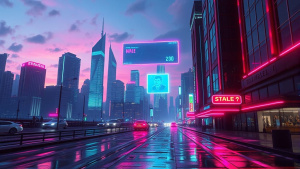CSS, short for Cascading Style Sheets, is a stylesheet language used to control the appearance and layout of web pages. Introduced by the World Wide Web Consortium (W3C) in 1996, CSS separates the content of a website (structured with HTML) from its visual presentation, allowing developers to create aesthetically pleasing and user-friendly designs.
Core Concepts of CSS
Selectors and Rules
 CSS operates on a system of selectors and rules. Selectors specify the HTML elements to style, while rules define the styles applied to those elements.
CSS operates on a system of selectors and rules. Selectors specify the HTML elements to style, while rules define the styles applied to those elements.
For example:
h1 {
color: blue;
font-size: 24px;
}
This rule changes all h1 elements to blue and sets their font size to 24 pixels.
The Cascade
The “cascading” aspect of CSS determines how styles are applied when multiple rules conflict. Styles are prioritized based on:
- Specificity: More specific selectors take precedence.
- Source Order: Later rules override earlier ones.
- Importance: Rules marked with !import override all others.
Properties and Values
CSS uses a property-value system. For example, color is the property, and blue is the value in
color: blue;.
Media Queries
Media queries allow for responsive design by applying styles based on the user’s device, screen size, or resolution.
For example: 
@media (max-width: 600px) {
body {
font-size: 14px;
}
}
How CSS is Used to Style Websites
Styling Text
CSS controls text appearance, including font family, size, color, spacing, and alignment. Example:
p {font-family: Arial, sans-serif;line-height: 1.6;text-align: justify;}
Defining Layouts

CSS enables developers to create complex layouts using techniques such as:
- Box Model: Governs the spacing and size of elements through
margin,border,padding, andwidth. - Flexbox: Simplifies alignment and distribution of items in a container.
- Grid: Creates advanced, two-dimensional layouts.
Example of a grid layout:
.container {
display: grid;
grid-template-columns: repeat(3, 1fr);
gap: 10px;
}
Adding Colors and Backgrounds
CSS allows for vibrant designs with color properties and background options:
body {
background-color: #f0f0f0;
color: #333;
}
header {
background-image: url('header-bg.jpg');
background-size: cover;
}
Responsive Design
 With media queries and flexible units like percentages or
With media queries and flexible units like percentages or em, CSS adapts layouts to different devices:
img {
max-width: 100%;
height: auto;
}
Animations and Transitions
CSS enables interactive effects, such as hover states or animations: 
button {
transition: background-color 0.3s;
}
button:hover {
background-color: #007bff;
}
@keyframes fadeIn {
from {
opacity: 0;
}
to {
opacity: 1;
}
}
.box {
animation: fadeIn 2s;
}
The Role of CSS in the Modern Web
CSS is essential for:
- Accessibility: Creating readable and user-friendly interfaces.
- Performance: Reducing inline styles and improving load times.
- Brand Identity: Establishing consistent visual themes.
Modern web development heavily relies on CSS preprocessors like SASS and LESS, frameworks like Bootstrap and Tailwind CSS, and tools like PostCSS for efficiency and scalability.
Conclusion
CSS is a powerful tool for enhancing the visual appeal and usability of websites. By mastering its features and integrating it with HTML, developers can create engaging, dynamic, and responsive designs that cater to diverse audiences and devices.